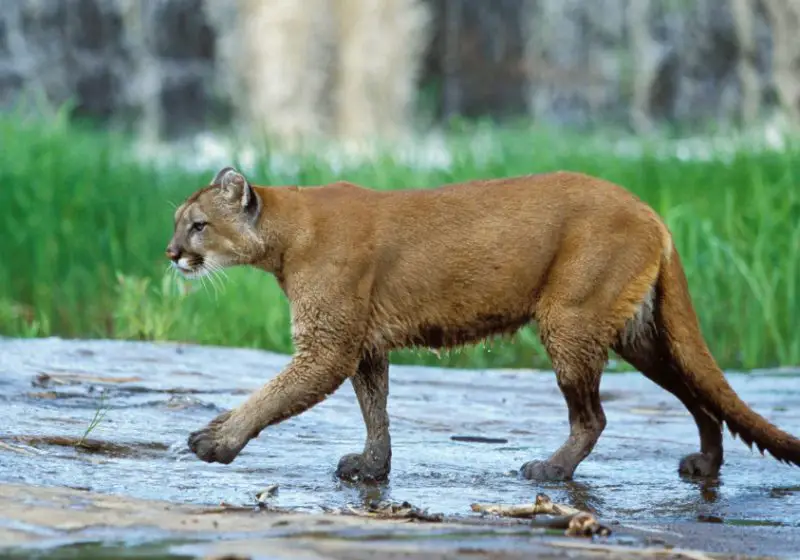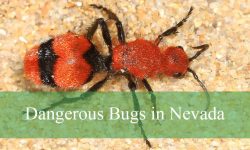Cougars — also known as mountain lions, pumas, or panthers — are among the most elusive and misunderstood predators in North America. In Washington State, cougar sightings are more common than most people realize. From the dense forests of the Cascades to suburban backyards on the outskirts of Seattle, reports of these majestic cats continue to rise. But what’s really happening behind these sightings? Are cougars becoming more aggressive, or are humans simply encroaching deeper into their territory?
In this comprehensive guide, we’ll uncover the truth about cougar sightings in Washington: where they occur, why they happen, how to stay safe, and what the state’s wildlife officials want you to know. Let’s dive deep into what no one tells you about these secretive predators.
Understanding Cougars in Washington

The Cougar’s Range and Habitat
Washington’s diverse landscape — from coastal rainforests to dry eastern plateaus — provides ideal conditions for cougars to thrive. These big cats are found throughout the state, though their population density is highest in the Cascade Range and northeastern regions. They prefer dense forest cover, rocky outcrops, and areas with abundant deer — their primary prey.
Despite their wide distribution, cougars are rarely seen. Their secretive, nocturnal habits keep them hidden, even in areas where they’re abundant. Most sightings occur at dawn or dusk, when cougars are most active.
Cougar Population in the State
According to the Washington Department of Fish and Wildlife (WDFW), the state’s cougar population is estimated between 2,000 and 2,500 adults. This number has remained relatively stable over the past decade, although local populations fluctuate depending on prey availability and human activity. With human development expanding into rural and mountainous areas, encounters between people and cougars have become more frequent.
Cougar Behavior and Diet
Cougars are solitary and territorial. A single male’s range can span up to 150 square miles, overlapping with several female territories. They primarily feed on deer but will also hunt elk, raccoons, rabbits, and occasionally livestock or pets if natural prey is scarce.
These predators play a critical ecological role — controlling deer populations and maintaining balance in forest ecosystems. However, as human communities expand into cougar habitats, the chances of conflict increase.
Where Cougar Sightings Happen Most Often
Western Washington
Western Washington, particularly the Cascade foothills, Olympic Peninsula, and Puget Sound region, sees the highest number of reported sightings. Towns like North Bend, Snoqualmie, Issaquah, and Maple Valley have experienced recurring reports of cougars wandering near homes or parks. In the dense forests of the Olympic Peninsula, sightings are common but often fleeting.
Central and Eastern Washington
In central and eastern regions, sightings occur near Yakima, Wenatchee, Spokane, and Colville. These areas offer ideal terrain — rugged, forested mountains with healthy deer populations. Hunters and hikers in these regions report encounters more frequently, especially in late fall and early spring when prey movement is high.
Suburban Encounters on the Rise
As development expands into natural habitats, suburban cougar encounters are becoming increasingly common. Motion cameras and security footage have captured cougars strolling through neighborhoods or school grounds, often at night. These incidents rarely end in attacks, but they highlight the growing overlap between wildlife and human activity.
Why Cougar Sightings Are Increasing
Urban Expansion into Wild Areas
One of the biggest reasons for more cougar sightings is habitat encroachment. As people build homes deeper into wooded or mountainous regions, cougars are forced to navigate human landscapes to find food or mates. What seems like an increase in cougar numbers is often just an increase in visibility.
Deer Population Growth
Cougars follow their prey, and Washington’s deer population has surged in many areas. Suburban communities with abundant gardens, orchards, and greenbelts often attract deer — and consequently, the cougars that hunt them.
Technology and Social Media
Trail cameras, smartphones, and social media have made cougar sightings far more noticeable. A single post of a blurry photo or security footage can spread quickly online, fueling the perception that cougars are everywhere. However, many of these sightings involve the same few individuals repeatedly passing through a given area.
Dispersal of Young Males
Juvenile male cougars often roam great distances in search of their own territory. These transient cats are more likely to be spotted near human areas as they explore new ranges. Most of these young cougars move on once they establish a home range elsewhere.
How to Identify a Real Cougar Sighting
Physical Characteristics
Cougars are large cats with tawny, golden-brown coats, long tails with black tips, and muscular builds. Adults typically weigh 90–160 pounds and stand about 2.5 feet tall at the shoulder. Their long tails — nearly as long as their bodies — are their most distinctive feature, helping balance during leaps.
Mistaken Identity: Bobcats and Coyotes
Many reported “cougar sightings” turn out to be misidentifications. Bobcats, with their short tails and spotted coats, are smaller but often mistaken for juvenile cougars. Coyotes or large dogs seen at a distance can also cause confusion. The key difference is the tail — cougars have long, sweeping tails, while bobcats and coyotes do not.
Signs of Cougar Presence
Even if you don’t see a cougar directly, there are telltale signs of their presence:
- Large paw prints about 3–4 inches wide, with no claw marks.
- Scratch marks or “scrapes” where cougars mark territory.
- Prey remains covered with leaves or dirt — a common cougar behavior.
Are Cougar Attacks Common in Washington?
The Real Statistics
Despite increasing sightings, cougar attacks remain extremely rare. According to WDFW, there have been fewer than 20 verified attacks in Washington in over a century, and only two fatalities — one in 1924 and another in 2018 near North Bend. The vast majority of encounters end without any aggression.
Why Attacks Happen
Most cougar attacks occur when a cat feels cornered, is protecting kittens, or mistakes a person for prey (especially children or joggers moving quickly). Cougars are naturally wary of humans and usually flee when detected. Provoking, chasing, or running from them can trigger a chase instinct.
Human Safety Factors
Hikers, runners, and campers in cougar territory should take precautions:
- Avoid hiking alone at dawn or dusk.
- Make noise to alert wildlife of your presence.
- Keep pets leashed and children close.
- Never run if you encounter a cougar — maintain eye contact, back away slowly, and make yourself look larger.
What to Do If You Encounter a Cougar
During an Encounter
If you come face-to-face with a cougar:
- Stay calm. Do not turn your back or run.
- Make yourself appear larger. Raise your arms, open your jacket, or hold up a stick.
- Speak firmly. Loud, confident sounds often deter cougars.
- Maintain eye contact. Do not crouch or bend down.
- Throw objects if necessary. Rocks or sticks can be used to defend yourself if the cougar acts aggressively.
If a Cougar Attacks
Fighting back is your best option. Use sticks, rocks, or any tools at hand. People who have survived cougar attacks often did so by fighting aggressively and not playing dead.
Washington’s Cougar Management Policies
Role of the Washington Department of Fish and Wildlife (WDFW)
The WDFW manages cougar populations through scientific monitoring, hunting regulations, and public education. Licensed hunting is permitted in specific areas to help balance populations and reduce conflicts. Hunting seasons and quotas vary by region, based on cougar density and deer population data.
Handling Problem Cougars
When a cougar poses a direct threat — for example, attacking livestock or stalking near homes — wildlife officers may trap or euthanize it. Relocation is rarely effective, as cougars often return or struggle to survive in new territories.
Reporting a Sighting
If you see a cougar, report it to WDFW immediately. Include details like location, time, and behavior. Accurate reports help wildlife officials track movement patterns and assess potential risks.
Myths and Misconceptions About Cougars
Myth 1: Cougars Are Overrunning Washington
False. Cougar populations have remained relatively stable. Increased sightings reflect human encroachment and better reporting, not an explosion in numbers.
Myth 2: Cougars Stalk People Regularly
While cougars may observe humans out of curiosity, true stalking behavior is rare. Most cats keep their distance unless drawn by food or prey.
Myth 3: They Only Live in Remote Wilderness
Not true. Cougars have adapted surprisingly well to semi-urban environments. Sightings have been reported near golf courses, schools, and suburban greenbelts.
Myth 4: Killing Cougars Makes People Safer
In fact, excessive hunting can destabilize populations, causing young, inexperienced males to disperse into human areas — increasing the chance of conflict.
Tips for Living Safely in Cougar Country
Protect Your Property
- Keep garbage secured and pet food indoors.
- Install motion lights or alarms to deter wildlife.
- Remove dense brush or low-hanging trees that provide hiding spots.
Protect Your Pets
- Supervise pets outdoors, especially at night.
- Keep cats indoors and dogs on leashes.
- Avoid letting small pets roam near forest edges.
Outdoor Awareness
When hiking or camping:
- Hike in groups and carry a whistle or bear spray.
- Avoid wearing headphones that block ambient sounds.
- Store food and waste securely to avoid attracting wildlife.
The Ecological Importance of Cougars
Maintaining Ecosystem Balance
Cougars are apex predators. By preying on deer and elk, they prevent overgrazing and help maintain healthy forests. Studies show that regions with stable cougar populations have greater biodiversity and stronger vegetation recovery rates.
Influence on Other Wildlife
Cougar kills provide food for scavengers like foxes, ravens, and eagles. Their presence indirectly supports a balanced and thriving ecosystem.
Why Conservation Matters
Despite their strength, cougars face ongoing challenges — habitat loss, vehicle collisions, and illegal poaching. Protecting them means protecting Washington’s broader natural heritage.
Frequently Asked Questions About Cougar Sightings in Washington
Are Cougars Dangerous to Humans?
Cougars rarely attack humans. They avoid confrontation and prefer solitude. Attacks usually occur when the animal feels threatened or provoked.
What Should I Do If I See a Cougar Near My Home?
Report the sighting to WDFW and avoid approaching it. Secure pets and remove outdoor food sources. Do not attempt to chase or trap the animal.
How Can I Tell If a Cougar Is Nearby?
Look for large tracks, scat with hair or bones, and claw marks on trees. If deer carcasses are covered with leaves or soil, a cougar may be nearby.
Can Cougars Be Relocated Safely?
Relocation is often unsuccessful. Cougars are territorial and struggle to adapt to new areas. They may attempt to return or fail to find adequate prey.
How Common Are Cougar Sightings in Washington Each Year?
Hundreds of sightings are reported annually, but only a fraction are confirmed. Most occur in the Cascades and Olympic Peninsula regions.
Final Thoughts
Cougars are powerful, graceful, and essential to Washington’s wilderness. While their presence may stir fear, understanding their behavior helps reduce conflict and preserve coexistence. Most sightings are harmless reminders that wild nature still thrives, even in our modern world.
By staying informed, practicing safety, and respecting wildlife boundaries, Washington residents can coexist peacefully with these magnificent predators — a true symbol of the Pacific Northwest’s untamed spirit.






